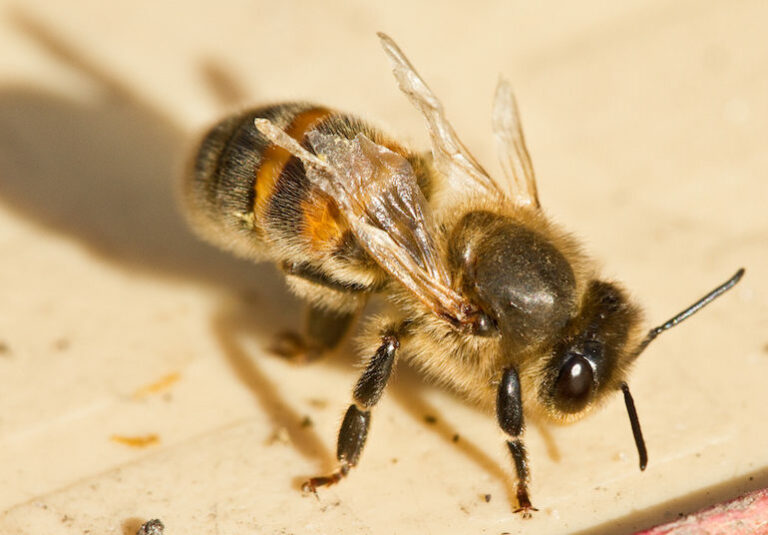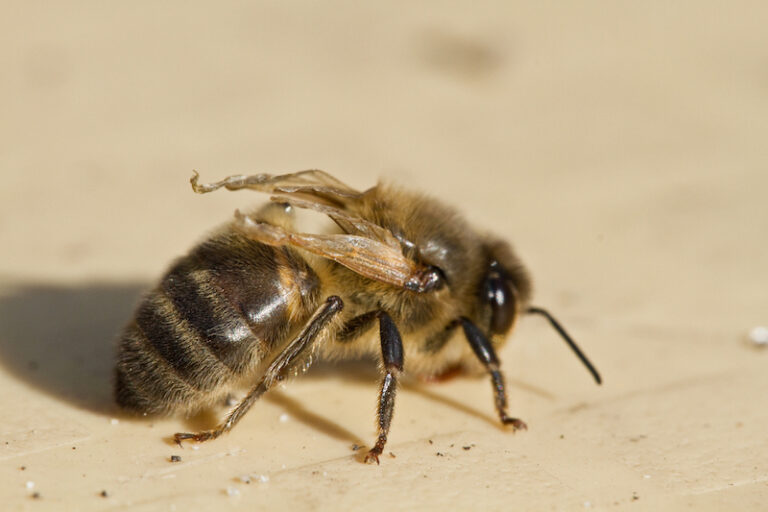 Véto-Pharma
Véto-Pharma Deformed Wing Virus (DWV) and its spread around the globe is the focus of a recent publication by Professor Robert Paxton and colleagues from the Martin Luther University of Halle-Wittenberg in Germany.
DWV has long been present in honey bees and other insects such as wild bees, but its prevalence has only increased to threatening levels since varroa mites (Varroa destructor) have spread in A. mellifera colonies1. It is because varroa mites are such an efficient vector for the transmission of the virus that DWV has become almost omnipresent in honey bee colonies.
Nowadays, it is thought to be prevalent in most honey bee populations wherever varroa mites have spread as well. Its variant of origin, DWV genotype A (DWV-A) has first been detected in Japan in 1982 and is thought to have originated in Europe. DWV genotype B (DWV-B), on the other hand, has only been discovered in 2004 in the Netherlands.1


The present study describes how the more recent variant, DWV-B, has spread worldwide between 2008 and 2021, analyzing pre-existing literature on DWV-A and DWV-B findings. In addition, new data from Germany, Italy and the UK demonstrate that, the new variant has not only rapidly expanded, but it appears to be replacing the old variant. Developing epidemiological models based on empirical data, the researchers demonstrate that the rise of DWV-B to high prevalence and the concurrent elimination of DWV-A is predicted by their most plausible model.
Previous studies have demonstrated that the prevalence of the DWV in honey bee colonies is not affected by the application of varroa treatments2. If DWV is present in high levels in a honey bee colony, it cannot simply be “removed” again through efficient varroa treatments. Alternative transmission routes within the colony, other than varroa mites, are likely responsible for the persistence high DWV prevalence in honey bee populations3-4.
For beekeepers this means that constant monitoring of varroa infestation levels and keeping the infestation rate in their colonies low is crucial to avoid high DWV prevalence in the first place.
In an interview with Bee Culture, the authors of the present study highlight that the new variant (DWV-B) kills honey bees faster and is more easily transmitted compared to DWV-A. They clearly identify DWV as the biggest threat to honey bee colonies and conclude that more empirical data on transmission and virulence are needed to monitor the potential impact on honey bees and insects in general.
VTP-99-US-N01-07/22
1- Paxton, Robert J., et al. “Epidemiology of a major honey bee pathogen, deformed wing virus: potential worldwide replacement of genotype A by genotype B.” International Journal for Parasitology: Parasites and Wildlife 18 (2022): 157-171.
2- Locke, Barbara, et al. “Persistence of subclinical deformed wing virus infections in honeybees following Varroa mite removal and a bee population turnover.” PloS one 12.7 (2017): e0180910.
3- Posada-Florez, Francisco, et al. “Pupal cannibalism by worker honey bees contributes to the spread of deformed wing virus.” Scientific Reports 11.1 (2021): 1-12.
4- Burnham, Phillip Alexander, et al. “Flowers as dirty doorknobs: Deformed wing virus transmitted between Apis mellifera and Bombus impatiens through shared flowers.” Journal of Applied Ecology 58.10 (2021): 2065-2074.
Join the Véto-pharma community and receive our quarterly newsletter as well as our occasional beekeeping news. You can unsubscribe at any time if our content does not suit you, and your data will never be transferred to a third party!

© 2019-2024, Véto-pharma. All rights reserved